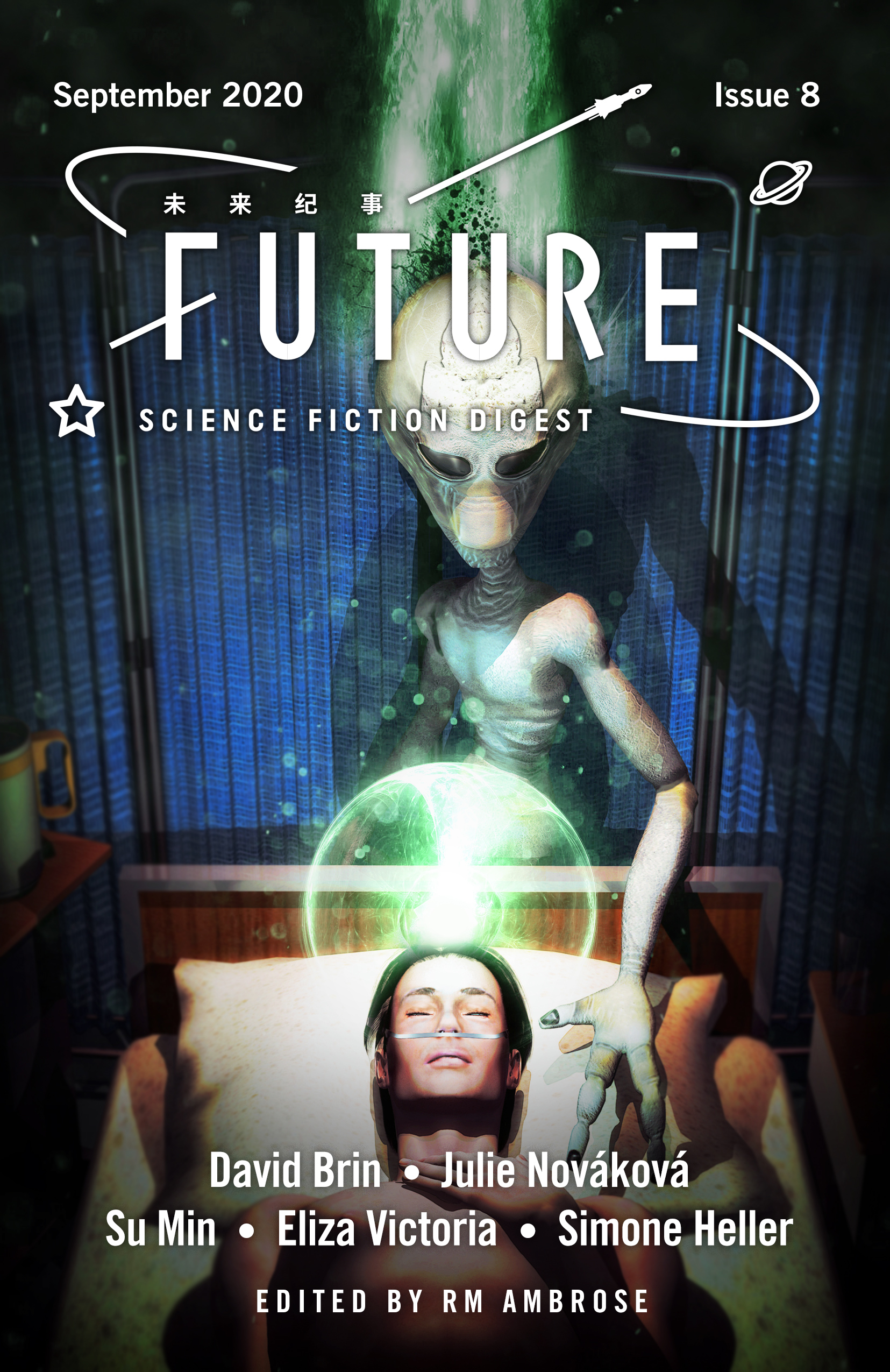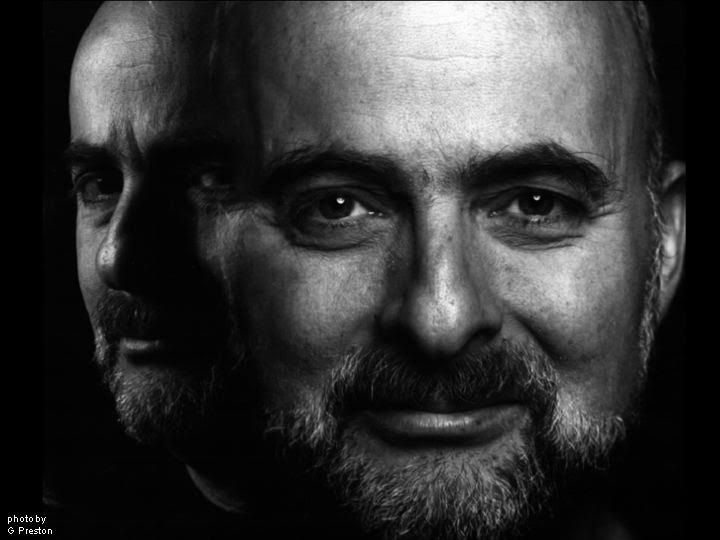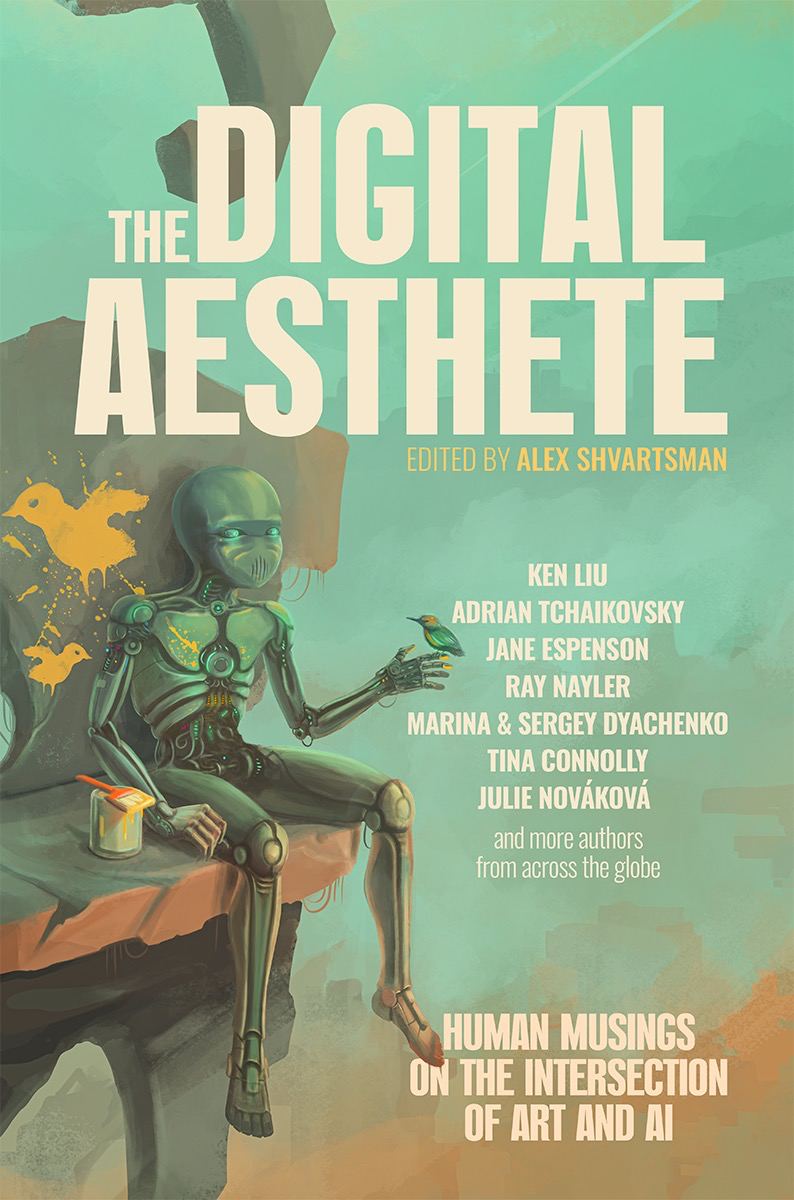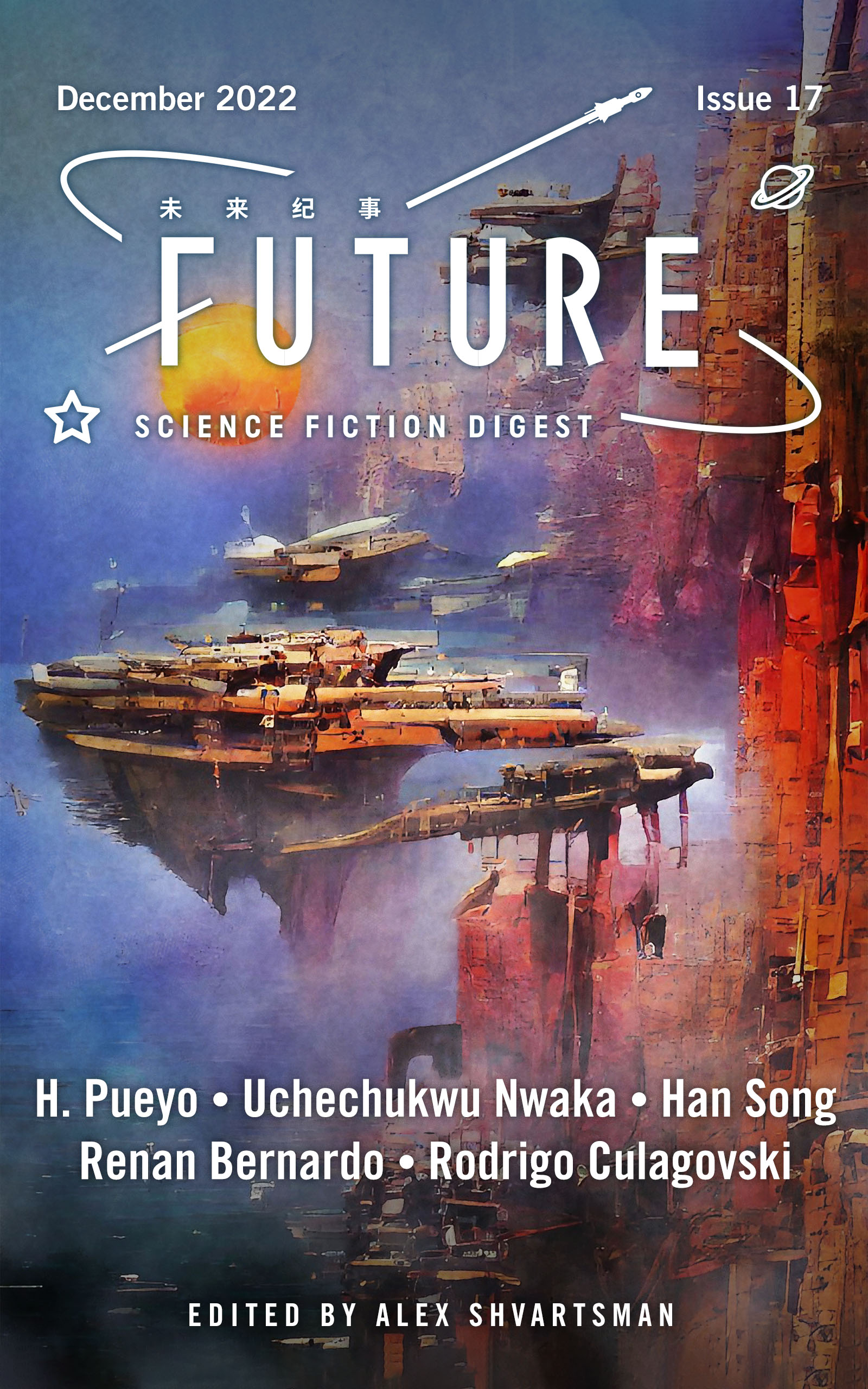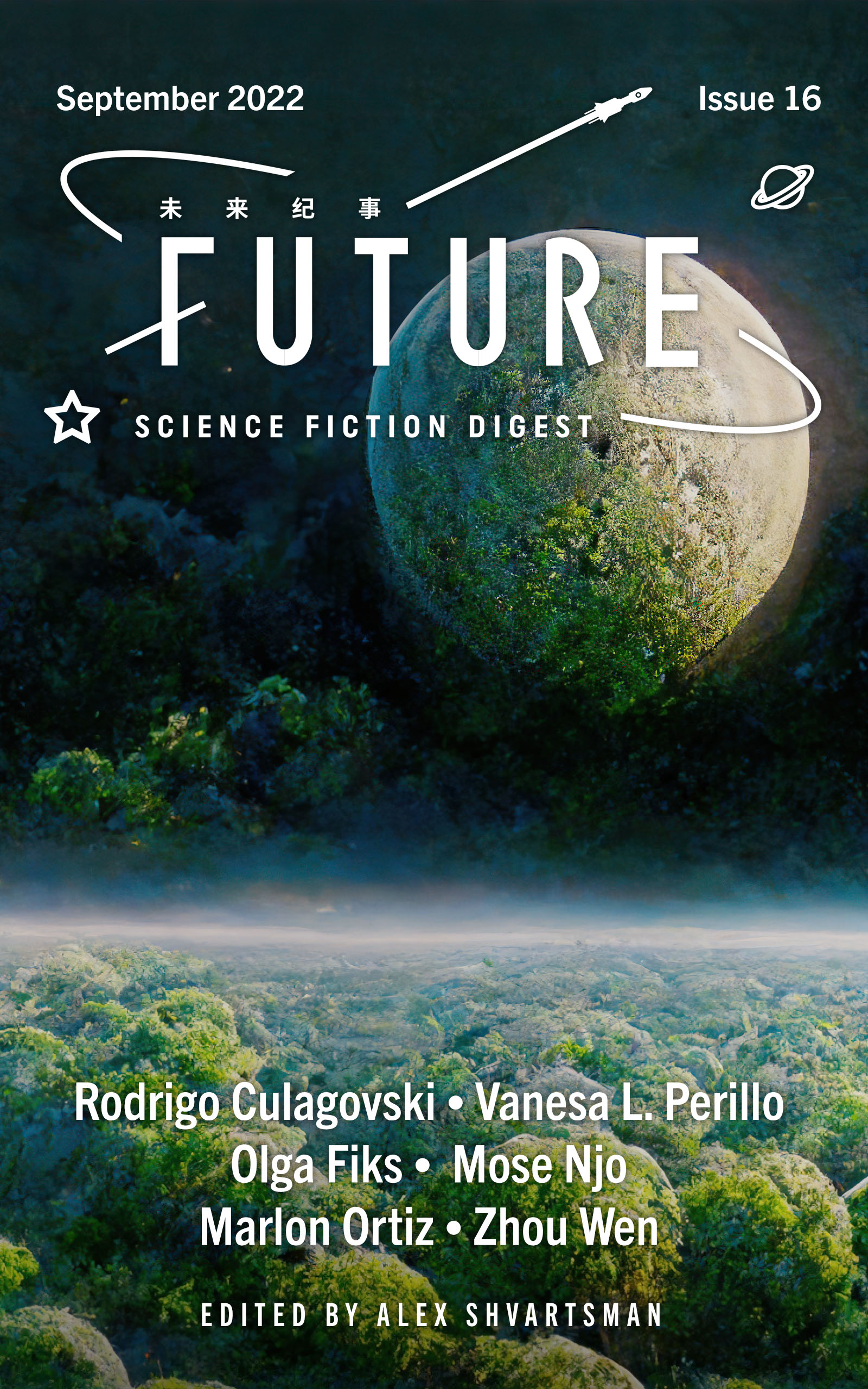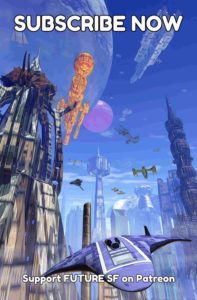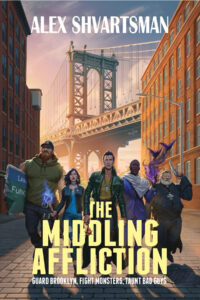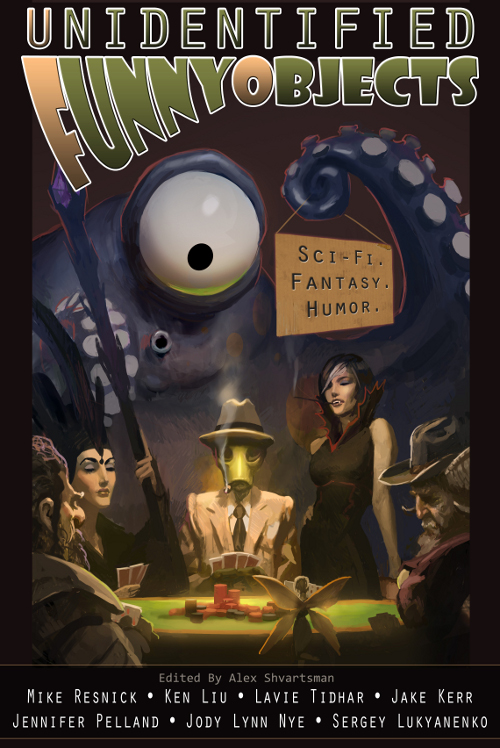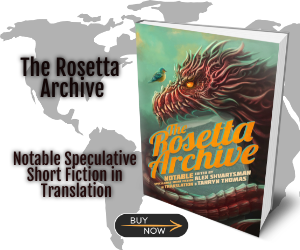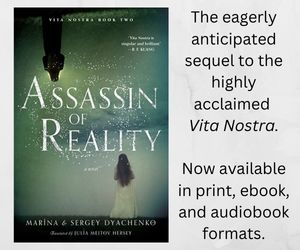Like every person who ever contemplated existence, I’ve wondered if the world was made for me—whole and new—this very morning, along with counterfeit memories of what came before.
Recollection is unreliable, as are the records we inherit each day. Even those we made the night before—our jotted notes or formal reports, our memorials carved deep in stone—even they might have been concocted, along with memories of breakfast, by some deity or demon. Or by an adolescent 28th Century sim-builder, a pimpled devil, playing god.
Find the notion absurd?
Was that response programmed into you?
Come now. History was always written by the victors, while losers passed their entire lives only to be noted as brief speed bumps. And aren’t all triumphs weathered by time?
I sound dour. A grumpy grownup. Well, so it goes, when tasked with cleaning messes left by others. Left by my former self.
And so, with a floating sigh of adulthood, I dive into this morass—records, electronic trails and “memories” that float before me like archaic dreams. Ruminations of an earlier, ignorant—not innocent—me.
It all started medically, you see. With good intentions, like so many sins.
January 6, 2023:
Organ replacement. For a generation it was hellishly difficult and an ethical nightmare. Millions lingered anxiously on waiting lists, guiltily hoping that a stranger out there would conveniently crash his car—someone with identical histocompatibility markers, so you might take a kidney or a liver with less probability of rejection. His bad luck transforming into your good fortune. Her death giving you a chance to live.
Even assuming an excellent match, there’d be an agony of immunosuppressant therapy and risk of lethal infections. Nor was it easy on us doctors. When a transplant failed, you felt you were letting two patients down, both recipient and donor.
Sci fi dystopias warned where this might lead. Sure enough, some countries started scheduling criminal executions around the organ want-list. Granting reprieves till someone important needed a heart... your heart. Then, off to disassembly.
When micro-surgeons got good enough to transplant arms, legs and faces—everything but the squeal—we knew it was only a matter of time till the Niven Scenario played out. Voters would demand capital punishment for more than just heinous crimes. Your fourth speeding ticket? Time to spread you around. Is it really death, when nearly all your parts live on, within a hundred of your neighbors?
Hell gaped before us. There had to be a better way.
And we found it! Grow new parts in the lab. Pristine, compatible and ethically clean.
Caterpillar eat! Chew that big old leaf.
Ugly little caterpillar, your relief,
When you’ve chomped your fill, will be to find a stem.
Weave yourself a dressing room, hang in it, and then
Change little caterpillar, grow your wings!
Now go find your destiny. Nature sings.
When we started trying to form organs in situ, George Stimson claimed the process would turn out to be simple. He offered me a wager—ten free meals at his favorite salad bar. I refused the bet.
“Those are your stakes? Lunch at the Souplantation? Acres of veggies?”
“Hey, what’s wrong with healthy eating? They have the genuine stuff.”
“My point exactly, George. Every time we go there, I look at a plate full of greens and think: this is what real food eats!”
He blinked a couple of times, then chuckled at my carnivorous jibe before swinging back to the main topic—building new human organs.
“Seriously. I bet we can get away with a really simple scaffold. No complicated patterns of growth factors and inhibitors. None of this stuff.”
He waved at the complex map of a human esophagus that I had worked out over the weekend—a brilliantly detailed plan to embed a stretchy tube of plastic and collagen with growth and suppression factors. Along with pluripotent cells, of course, the miracle ingredient, cultured from a patient’s own tissues. Some of the inserted chemicals would encourage the stems to become epithelial cells here and here. Others would prompt them to produce cartilage there and muscle-attachment sites here and here and...
...and George thought my design way too complex.
“Just lace in a vascular system to feed the stems,” he said. “They’ll do the rest.”
“But how will they know which adult cell type to turn into?” I demanded. “Without being told? How will you get these interleaved fans and arrays of connective tissues and tendons and vessels and glands….”
This was way back near the turn of the century, when we had just figured out how to take skin or gut cells and transform them back into raw stems, a pre-differentiated state that was pluripotent or capable of becoming almost any other variety, from nerves to astrocytes to renal... anything at all! Exciting times. But how to assign those roles in something as complex as a body organ? We had found specific antigens, peptides, growth factors, but so many tissues would only form if they were laid out in ornate patterns. As complex as the organs they were meant to rebuild or replace.
Patterns we were starting to construct! Using the same technology as an ink-jet printer, spray-forming intricate 3-D configurations and hoping someday to replicate the complex vein patterns within a kidney, then a spinal cord, and eventually...
“We won’t have to specify in perfect detail,” George assured me. “Life will find a way.”
I ignored the movie cliché. Heck, why not try his approach in a pig or two?
We started by ripping out a cancer-ridden esophagus, implanting a replacement made of structural polygel and nutrients. This scaffolding we’d lace with the test animal’s own stem cells, insert the replacement....
Whereupon, voila. Step back, and witness a miracle! After some trial and error... and much to my astonishment... George proved right. In those first esophagi we implanted—and in subsequent human tests—my fine patterns of specific growth factors proved unnecessary. No need to command them specifically: “You become a mucus lining cell, you become a support structure....” Somehow, the stems divided, differentiated, divided again, growing into a complete adult esophagus. And they did it within the patient!
“How do they know?” I asked, despite expecting in advance what George would say.
“They don’t know, Beverly. Each cell is reacting only to its surroundings. To chemical messages and cues from its environment, especially its immediate neighbors. And it emits cues to affect them, as well. Each one is acting as a perfect—if complicated—little...”
“...cellular automaton. Yes, yes.”
Others, watching us finish each other’s sentences, would liken us to an affectionate old married couple. Which in several ways we were. Few noticed the undercurrent of scorching rivalry that by now spanned decades. Spectacularly successful teamwork, as far as the world was concerned.
Well, the world was easy to fool. As we both had been, two or three marriages ago, each, back when George was the most handsome, brilliant and vital man I ever knew… and when I used to so look forward to looking into a mirror or appearing on Science Channel shows. Now? They all still called us brilliant, at least. Though I have also heard cranky and curmudgeonly….
Well, well, scientific detachment doesn’t mean we’re immune to grumpiness over life’s inevitable decline. In fact, it stokes an outraged retort:
Who says it’s inevitable!
George and I still shared a simple cause. To spit death in the eye at every turn.
“So,” I continued, “just by jostling against each other in the chemical pattern of the scaffold, that alone is enough for the stem cells to sort themselves out? Differentiating into dozens of types, in just the right geometry?”
“Geometry, yes.” George nodded vigorously. “Geometrical biochemistry. I like that. Good. Isn’t that how cells sort themselves into vastly complex patterns inside a developing fetal brain? But of course you see what all of this means.”
He gestured along a row of lab benches at more recent accomplishments, each carefully tended by one or more students.
—a functioning liver, grown from scaffolding inside a mouse, till we carved it out. The organ now lay in vitro, still working, fed by a nearby blood pump—
—a cat whose lower intestines had been replaced by polygel tubing... that was now completely lined with all the right cells: in effect two meters of fully functioning gut—
—two dozen rats with amputated fore-legs, whose stumps were encased in gel-capsules. Along simple frameworks, new limbs could be seen taking shape as the creature’s own cells (with a little coaxing from my selected scarring inhibitors and stem-sims) migrated to correct positions in a coalescing structure of flesh and linear bone. Lifting my gaze, I saw cages where older creatures hobbled about on regrown appendages. So far, they were clumsy, club-like, footless things. Yet, they were astonishing.
And yes, I saw what George meant.
“We always assumed that mammals had lost the ability to regenerate organs, because it doesn’t happen in nature. Reptiles, amphibians and some fish can regrow whole body parts. But mammals in the wild? They... we... can only do simple damage control, covered by scar tissue.”
“But if we prevent scarring,” he prompted. “If we lay down scaffolds and nutrient webs—”
“—then yes, there emerges a level of self-repair far more sophisticated than we ever imagined possible in mammals.”
I shook my head. “But it makes no sense! Why retain a general capability when nature never supplies the conditions to use it? These latent repair systems re-emerge only when we provide the right circumstances in our lab.”
George pondered a moment.
“Beverly, I think you’re asking the wrong question. Have you ever wondered: why did mammals lose... or give up... this ability in the first place?”
“Of course I have! The answer is obvious. With our fast metabolisms, we have to eat a lot. No mammal in the wild can afford to lie around for weeks, even months, the way a reptile can, while waiting for a major limb or organ to regrow. He’d starve long before it finished. Better to concentrate on things mammals are good at, like speed, agility and brains, to avoid getting damaged in the first place. Mammalian regeneration probably vanished back in the Triassic, over a hundred million years ago.”
He nodded. “Seems a likely explanation. But what’s puzzling you—” He prompted me with a lifted eyebrow, a coaxing gesture of encouragement that I used to find charming, almost back in the Triassic.
“What puzzles me is why the capability has been hanging around all this time! Lurking in our genome, never used!”
George held up a hand.
“I think we’re getting ahead of ourselves. First, let’s admit that humans have changed the balance, the equation. We are now mammals who can lie around for weeks or months while others feed us. First the family and tribe took up this duty, back in the Stone Age, then village and town and—”
“—and Canadian National Health, sure. And those innovations increased survival rates after serious injuries,” I admitted. “But it never resulted in organ or limb regrowth!”
Abruptly I realized that half a dozen grad students had lowered their tools and instruments and were sidling closer. They knew this was historic stuff. Nobel-level stuff. Heck, I didn’t mind them listening in. But shirking shouldn’t be blatant! I sure never got away with it, back when I served my time as a lab-slave. My withering glare sent them scurrying back to their posts.
Oblivious, as usual, George simply blathered on.
“Yes, yes. For that to happen, for those dormant abilities to re-awaken, it seems we need to fill in all sorts of lost bits and pieces. Parts of the regrowth process that were mislaid across—what’s your estimate, again?”
“A hundred million years. Ever since advanced therapsids became fully warm-blooded, early in the age of dinosaurs. That’s when major organ regrowth must have gone dormant in our ancestors. Heck, its not surprising that some of the sub-processes have faded or become flawed. I’m amazed that any of them—apparently most of them—are still here at all!”
“Are you complaining?” he asked with an arched eyebrow.
“Of course not. If all of this holds up,” I waved around the lab, now quadrupled in size, as major funding sources rushed to support our work, “the therapeutic implications will be staggering. Millions of lives will be saved or improved. No one will have to languish on organ donor waiting lists, praying for someone else to have bad luck.”
I didn’t mention the other likely benefit. One more year of breakthroughs and the two of us would be shoe-ins for Stockholm. In fact, so certain was that starting to seem, that I had begun dismissing the Nobel from my thoughts! Taking for granted what had—for decades—been a central focus of my life, my existence. It felt queer, but the Prize scarcely mattered to me anymore. I could see it now. A golden disk accompanied by bunches of new headaches. Speeches and advisory panels. Public events and “inspirational” appearances, far more than George would face, because every charismatic woman scientist has to go the rounds, doing role model duty for girls. It would all add up to pile after pile of distractions to yank me from the lab.
From seeking ways to save my own life.
But especially from finding out what the heck was going on.
The cicada labors seventeen years
Burrowing underground,
Suckling from tree roots,
Below light or sound.
Till some inner clock commands
“Come up now, and change!
“Grow your wings and genitals
“Forget your humus range.”
So out they come, in adult form,
To screech and mate and die.
Mouthless, brief maturity,
As generations cry.
We dived into the genome.
One great 20th Century discovery had been the stunning surprise that only two percent of our DNA consists of actual codes that prescribe the making of proteins. Just 20,000 or so of these “genes” lay scattered along the forty-six human chromosomes, with most of the rest—ninety-eight percent—composed of introns and LINEs and SINEs and retro-transposons and so on...
For a couple of decades all that other stuff was called “junk DNA” and folks deemed it to be noise, just noise, can you believe it? Dross left over from the billion years of evolution that has passed, since our first eukaryotic ancestor decided to join forces with some bacteria and spirochetes and try for something bigger. Something more communal and organized. A shared project in metazoan life.
Junk DNA. Of course that never made any sense! It takes valuable energy and resources to build each ladder-like spiral strand of phosphates, sugars and methylated nucleic bases. Darwin would have quickly rewarded individuals who pared it all down. Just enough to do the task at hand, and little more. Redundancy is blessed, but efficiency is divine.
Eventually, we found out that much of the “junk” was actually quite important. Sequences that served a vital function, regulating when a gene would turn on to make its protein, and when it should stop. Regulation turned out to take up heaps of DNA. And much of the rest appeared to be recent infestations from viruses—a creepy fact to ponder, but of no interest to me.
For a while, as stretches of regulatory codes gave up their secrets, some folks thought we had a complete answer to the “junk DNA problem.”
Only, vast stretches remained mysterious. Void of any apparent purpose, they didn’t seem to do anything at all. And they were much too big to be just punctuation or spacers or structural elements. The junk theory came back as colleagues called those big, mystery patches meaningless relics...
... till George and I made our announcement.
Fish are fish are funny folk,
They never laugh and never joke.
When mating, there is no romance,
Just a throng, a whirling dance.
Then commence...
...the winnowings—
Ten billion sperm, ten million eggs,
Produce a hundred thousand larvae,
Hundreds survive, become fish,
For maybe two to start it over.
CBC – The Q: Welcome back, I’m Sandra Oh and this is the Q. We’re having one of our live music and interview shows, coming to you in sparkling 5-D from the Great Plains Theater in Winnipeg. We’ll get back to tonight’s fantastic noppop group, The Floss Eaters—yes, let it out for them! Only now let’s all calm down and welcome onstage our special guests. Give a warm welcome to Manitoba’s brightest science stars—Beverly Wang and George Stimson.
Professor George Stimson: Thank you, Sandra.
Professor Beverly Wang: Yes, it’s good to be on your lively show. My, that last song was... Cana-Do Invigo-Rating.
SO: Ha ha! Cana-do indeed. Totally with-it. You’ve won the crowd over, Madame Professor. It’s not Grampa’s rock ’n roll, eh? Now hush you folks in the seats. We only have Bev and Geo for a few minutes before they must go back to changing our world. So let me start with Beverly, on behalf of folks here and in our audience around the globe. We’ve all been amazed by the success you both sparked in re-growing individual organs and body parts, giving hope to millions. Is it true that you’ve also done it yourselves?
PBW: Well, yes, I have a new kidney and liver, grown in vats from my own cells. I was offered regular transplants—they found a match. But it seemed more honest and true to use our methods myself, as one of the first volunteers. So far, the new parts have taken hold perfectly.
SO: And you, George?
PGS: My own grafts were less ambitious... mostly to deal with widespread arthritis. Joint and tendons. Reinforcement and replacement.
SO: How’d that go?
PGS: Shall I juggle for you?
SO: Hey now, doc, those water bottles are... wow! That’s some talent. Let’s hear it for Circus Stimson!
PGS: Well, I used to show off in college... it’s been years, but it seems that... oops!
SO: No sweat, we’ll clean it up. That’s an impressive demonstration of restored youth and zest! Still, we’re always wondering on the Q... what’s next? What do you have cooking beyond grow-your-own-organs? I have to tell you we hear rumors that you’ve got something even bigger brewing. Called the Caterpillar Cure?
PGS: Well now, Sandra, that’s not a name we use. It arose when we described taking a deathly ill test subject and wrapping or encasing the whole body in a protective layer—
SO: A cocoon!
PGS: Hmm, well, yes. In a sense. We then trigger processes that have long lain dormant in the mammalian toolkit. We’ve become quite adept at extrapolating and filling in lost or missing elements. Whereupon we give the body every chance to repair or regrow or even replace its own component parts without surgical intervention, in a way that’s wholly... or mostly... natural.
SO: Wow... I mean, wow! I haven’t heard applause that wild from a live audience since we had both Anvil and Triumph on the show, playing together in Ottawa. Now settle down folks. Professor Wang, may I ask how you feel about the way pop culture is interpreting some of this? A cluster of quickie-horror pollywood flicks have suggested that this awakening of long-dormant traits might go awry in spectacular ways. Have you seen any of these cable-fables?
PBW: Just one, Sandra. At a lab party, some of our students played It’s Reborn! for laughs. We all found it hilarious.
SO: So we won’t be seeing all sorts of ancient throwbacks coming out of these cocoons? No bodies repairing and restoring themselves back into, say, Neanderthals? Or dinosaurs? Or gross slime?
PBW: Not any Neanderthals or dinosaurs, I promise. And there’s a reason. Because all of us, from you and me down to a newborn baby, are in our final, adult form.
SO: Babies... are adults?
PBW: This may take a minute. You see, all animal life originally passed through multiple phases, and it is still true for a majority of complex species, like insects, arthropods and most fish.
Mating adults make embryos or eggs. Eggs create the larval stage, in vast numbers, whose job it is to eat and grow. A small fraction of larvae survive to transform again—as when insects pupate, for example a caterpillar’s cocoon—turning at last into the imago or adult form, whose primary job is to complete the cycle. You know... with sex.
SO: Clearly a favorite word for some of you out there. Settle down. So Dr. Stimson, what does this—
PBW: The basic principle is called holometaboly, or complete metamorphosis, and it’s one more example of Nature’s cleverness. This phased approach to life partitions youngsters and adults into completely different worlds, so that neither competes with the other. It’s such a successful way of life that it’s used by the majority of insects, and therefore, the majority of all animals.
SO: Wow. Okay then George, why—
PBW: But some life orders have abandoned the old process. For birds, reptiles, marsupials and especially placental mammals, all the early phases seem to have been compacted down into the early embryonic period. It all takes place within the egg or the mother’s womb. Though incomplete and neotenous, our human infants are born already in the adult stage. And hence when a patient undergoes recuperative chrysalis—
PGS: —none of them ever comes out with ancient traits like bony eye-ridges or tails or swinging from lamp posts. At least, none so far!
SO: So far? You mean there’s still hope! I was sort of hankering for a nice tail.
PGS: If it ever proves possible Sandra, I promise you’ll be one of the first people we’ll inform.
Tadpole swishes tail
Breathes water, while preparing
Brand new lungs and legs
Lab Notes: George Stimson – 8/8/2030
I was annoyed with Beverly. We had been asked to keep things light, not wonkish, for the CBC broadcast. She gets so pedantic and lectury. As if I didn’t get enough of that when we were married. And then again, when she meddled in my second marriage, telling us how to raise our—oh, never mind.
And yet, her ad hoc little rant about stages of life stayed with me, afterward, prodding at my subconscious.
Of course I already knew all that—about embryo-larva-pupa-adult metamorphosis. It’s basic high school bio. Still, the notion would not let go of me. And I wondered.
We’ve accomplished “miracles” by uncovering traits, tools and processes that have lain dormant in the human genome for a hundred million years, ever since mammals abandoned organ replacement for a quick and agile lifestyle. Beverly and I have guaranteed ourselves lasting fame by learning tricks to fill in the lost portions of code and re-start the processes of organ regrowth. In fact, the techniques helped save both our lives, staving off our own health problems for the time being, letting us enjoy our renown for a little while.
That may satisfy her, but I’ve always been kind of an insatiable bastard. And I can’t help wondering.
Despite all our progress, we’ve only explained another five percent or so of the mystery DNA. Even after filling in methods of organ regrowth, lost since the Triassic, there remains another whole layer of enigmatic chemistry. Huge stretches of genetic code that are both still unknown and clearly even older than a mere hundred million years!
Oh, it’s pretty clear by now that the bulk of it is somehow related to organ regrowth, but in some way that I still don’t understand.
It’s infuriating! I’ve been plotting codes, cataloguing and interpolating most of the likely missing pieces. Without these lost switches, the dormant genes have languished, unused for ages. Till now, I have only dared experiment with the switches one at a time, in petri dishes, almost never in whole animals higher than a vole. And never all at once. Not without a theory to explain what they’re for.
Only now, I’m pondering a new hypothesis. A good one, I’m sure of it! Beverly’s blather about life phases made me realize just how far back this new layer of code really goes.
Extrapolate the decay rates and one thing is clear from drift-clock measurements. This second layer of mystery genes goes back not one hundred million years...
...but almost three hundred million! All the way to the early Permian Period, when amphibians were mostly pushed aside by the ancestors of reptiles, birds, dinosaurs and mammals. All of whom gave up the multi-stage style of living. Skipping the larval and pupa phases and spending all their lives as adults.
Astonishing. Can the second layer of dormant DNA really come to us from that far back?
It appears to! Which demands the next question. Once you set aside regulatory genes and those donated by viruses, and the ones Beverly and I discovered for organ regrowth...
...could the remainder be DNA that stretches far back? Programming instructions that our lineage used, way back when pre-mammal ancestors did pass through a “larval” stage?
If so, what would a “larval mammal” look like?
My best guess? Look at a frog! Amphibians are the order closest to us, that still pass through metamorphosis. The larval tadpole lives one kind of life underwater, then transforms into a frog. But there are frogs and toads who abandoned the first, aquatic phase, dealing with the transformation as we do... inside the embryo...
… and look at human embryos! The early fetus has gills and a tail! It’s called recapitulation of phylogeny—passing in the womb through intervening stages of evolution. But what if the thing that’s being recapitulated isn’t evolutionary phases, but our basic larval stage?
This is amazing. It all fits! I had prepared retroviruses with the replacement codons weeks ago, but I’ve been holding back, because there was no pattern, no logic. Only now I see it!
I’ve prepared a dozen chrysalis units, and asked our senior grad students, Patrick House and Dorothy Arguelles, to prep a rat for each one. I’ll handle the injections myself. It may take a hundred iterations, but they will all be meticulously recorded.
I feel almost reckless with excitement. Is that a side effect of my earlier treatments? My renewed joints and ligaments? Or am I giddy from impressing all those young people in the audience with my juggling? Ha!
Or is it the scientific prospect before me, standing on the verge of discovering something fantastic?
Like, perhaps, the true fountain of youth.
Fat ‘n glossy—lucky eater
Many-legged—big survivor
Hunger changes—now compelling
Pick a stem and—hang there eager
Twist and writhe while—glossy sticky
Strands emerge from—surprise places
Nature makes you—spin the strands round
Nature makes you—weave a garment
Tube to transform—into raiment
Into what you—were born meant-for
Lab Notes: George Stimson – 10/12/30
I had that dream again, even more intense than before—of being swaddled in some dark, closed place, drowning. But only part of me was terrified! An unimportant part, fading into insignificance. Palliated and balanced by a rising sense of eagerness.
A growing, tense desire for a return to the womb. For a new womb.
I awoke in sticky sweat. A sheen that took scrubbing to remove, leaving skin that seemed baby-tender. Soft.
This time I gave in to my suspicions and, upon arriving at the lab, I drew some blood to test.
It’s in me.
The latest retrovirus. The one with our most up-to-date cocktail of missing-DNA insertions.
And there are symptoms other than weird dreams. A strange prickling of the skin. A rising sense of exhilaration, keen for something barely, vaguely perceived.
And my cancer was gone. The blood lymphoma. The slow prostate tumor. Both of them simply gone!
Or else... I looked closer. The cancers were still there... just no longer wild, voracious, uncooperative. Instead, they were jostling into structured positions with respect to one another—differentiating.
I hurried over to the latest batch of rat-cocoons, heart pounding. Yesterday they had seemed okay, raising our hopes. After thirty-three trials in which critters failed and died in varied gruesome ways, because of mistakes in my collection of Beverly’s extrapolated intron-switches, this set was doing fine! Still swaddled inside their protective encasements, they were showing signs of incredibly youthful tone and vigor, along with chromosomal re-methylization... like the enviable protein processing stability of the long-lived naked mole rat, but even more-so….
At last. At last, it dawned on me.
I know what’s really happening!
“I grew my own body,” he said. “Nobody else did it for me. So if I grew it, I must have known how to grow it. Unconsciously, at least. I may have lost the conscious knowledge of how to grow it sometime in the last few hundred thousand years, but the knowledge is still there, because—obviously—I’ve used it.”
― J.D. Salinger, Nine Stories
Dear Beverly,
When you read this, I may no longer be the George Stimson whom you knew.
I was right to follow your hunch about metamorphic life phases. But you and I both had one aspect all wrong.
Completely backward, in fact.
Yes, the second layer of dormant traits does go back three hundred million years, instead of merely one hundred million. And yes, it’s all about life phases that mammals and reptiles and birds abandoned, way back then. And yes, our methods seem to have succeeded at filling in most of the gaps, well enough to re-ignite those dormant traits, under the right conditions.
We’re gonna get another Nobel for this. Heck, they may retire the prize.
Which is small potatoes, given what’s now at stake.
But I had one thing all wrong. And you got it wrong too!
I thought it was the larval stage that had gone missing, that our ancestors abandoned so long ago, getting rid of that stage by cramming and recapitulating all larval development into the earliest bits of embryo. Birds and reptiles and mammals don’t do larvae as a major life cycle, right? You said it yourself. All of us go straight to adult phase.
So I figured: what harm could there be in activating some of those old larval traits in test animals? See if it will let us renew the body in spectacular ways. Why not? How could larval genes do much of anything harmful to an adult?
Set aside my clumsy lab error. Accidentally sticking myself, I somehow got a dose of restoration codons from a carelessly trans-species retrovirus. Okay, that was my bad. But the rats are doing well, and so should I. Moreover it promises to be the greatest adventure ever!
For you see I was wrong in a key assumption, Beverly. And so were you.
Mammals and reptiles and dinosaurs and birds... we simplified our life cycles, all right, eliminating one of the phases. But it wasn’t the larval stage we omitted!
We gave up adulthood.
Three million centuries ago, all the dry-living vertebrates—for some reason—stopped transforming into their final life phase. Storks and tortoises. Cows and people and lemurs and chickens. We’re all larvae! Immature Lost Boys who long ago refused—like Peter Pan—to move ahead and become whatever’s next.
Some species of caterpillars do that, never turning into butterflies or moths. Just like you and me and all our cousins. All the proud, warm-blooded or feathered or hairy or scaly creatures... including smug, self-satisfied Homo sapiens. All of us—Lost Boys.
Only now, a dozen rats and your dear colleague are about to do something that hasn’t been achieved by any of our common ancestors in three hundred eons. Not in seven percent of the age of the Earth. Not in at least ten million generations.
We’re going to grow up.
Change transforms winter
Winds blow in spring, then fall
Death is the maestro
December 12, 2030:
What a dope!
Oh George, you prize fool.
I always knew that someday he would pull something really, really stupid. But this beats every damned stunt he ever sprang on me, across almost fifty years. An amateurish lab error, breaking half the rules on handling retroviruses. And scribbling a blizzard of sophomoric rationalizations, like when he ran off with that Alsatian bitch Melisande – damn him! I could have intervened, if only George had called me sooner. I would have rushed home from the treatment center and to hell with my own problems!
I could have administered antivirals. Maybe arrested the process.
Or else strangled him. No jury on Earth would convict a dying old woman, not with the exculpating excuse he has given me.
Now, it’s too late. Those antediluvian traits are fully activated. By the time I got to the lab, our students were in a frenzy, half of them babbling in terror while the other half scurried about in a mad mania of excitement, doing what George had asked of them.
Taking data and maintaining his chrysalis. His cocoon.
I looked inside the container. Within the metal casement and its gel sustainment fluid, his skin has been exuding another protective layer, something no mammal has done since long before we grew fur or started lactating to feed our young. A cloud of fibers that tangle and self-organize to form a husk stronger than spider silk.
I’ve sent for an ultrasound scanner. Meanwhile, I plan to sacrifice one of the rats to find out if my suspicion is correct.
Within the Toxo parasite
Three complete genomes reside
Three varied life phases abide
A single cell can specialize
By becoming different beings
At apropos times
December 14, 2030:
Yes, George, I believe you were right, up to a point, and I was wrong.
Okay, I am now convinced.
Human beings are larvae and not adults.
Congratulations, you’ve reversed Dollo’s Law, proving that it is possible to reclaim evolutionary dead ends. You win our final argument.
You and I have discovered how to re-start a process our forebears abandoned, so long ago. And yes, if the codon restoration is as good as it seems—and it seems excellent, so far—then you may be heading for conversion into that long-neglected imago phase. Something completely unknown to any of us.
Oh, but underneath brilliance, you are, or were, such a dope. This is not how science should be done! You’ve taken a great discovery and plunged ahead recklessly, like the mad scientist in some Michael Crichton movie. We are supposed to be open, patient and mature truth seekers. Scientists set an example by avoiding secrecy and haste, holding each other accountable with reciprocal criticism. We spot each other’s errors.
If you had been patient, I would have explained something to you, George. Something that, evidently, you did not know.
The caterpillar does not become a butterfly.
We dissected one of the rats from its chrysalis, and confirmed my fears. Something my organo-chemist partner would have known, if he ever took Bio 101.
People think that when it weaves a cocoon around itself, the caterpillar undergoes a radical change in body shape. That its many legs transform themselves somehow into gaudy wings. That its leaf-cutting mouth adjusts and re-shapes into a nectar-sipping proboscis.
That isn’t what happens at all.
Instead, after weaving and sealing itself into a pupa shroud, the caterpillar dissolves! It melts into a slurry, super rich in nutrients, that feed a completely different creature!
The embryo of the butterfly—several tiny clumps of cells that the caterpillar had been carrying, all along—this embryo now erupts in growth, feeding upon the former caterpillar’s liquefied substance, growing into an entirely new being. One that eventually bursts forth, unfolding its imago wings to flutter toward a destiny that no caterpillar could ever know or envision, any more than an egg grasps the life of a chicken.
All right, it’s more complicated than the insect just dissolving into a kind of “soup.” Some organs stay intact, like the whole tracheal system. Others, like muscles, break down into clumps of cells that can be re-used, like a Lego sculpture decomposing into bricks that re-assemble along bits of old and new scaffolding. And some cells create imaginal discs—structures that produce adult body parts. There’s a pair for the antennae, a pair for the eyes, one for each leg and wing, and so on. So if the pupa contains a soup, it’s an organized broth full of chunky bits.
Still, there’s none of this growing up stuff, about a child becoming something new, an adult, in graceful phases. Nothing that any observer would call continuity of the entity.
How did Richard Bach put it?
“What the caterpillar calls the end of the world, the master calls a butterfly.”
Two entirely distinct and separate life forms, sharing chromosomes and a cycle of life, but using separate genomes that take turns. With little or no shared brain or neurons or memories to connect them. That is how it goes for many insects, in the purest form of metamorphosis.
Yes, sure, and for the record, things are less rigid among amphibians. The tadpole does transform itself into a frog, instead of horrifically dying to feed its replacement. Or, rather, death and replacement takes place piecemeal, gradually, over weeks. The frog might even remember a little of that earlier phase, wriggling and breathing watery innocence. I had hoped to find something like that, when we opened the rat chrysalis. A becoming, rather than wholesale substitution.
But no.
Some students gagged, retched, or fainted at the gush of noxious slurry that spilled out... a rat smoothy, peppered with undissolved teeth... then quailed back in disgust from the weird thing that we found growing at the cocoon’s lower half, gradually climbing a scaffold of ratty bits. Pale and leathery. Still small, tentative and hungry. Soft, but with ribbed, fetal wings and early glints of claws, plus a mouth that sucked, desperately eager for more liquefied rodent, before finally growing still.
And so I knew, before the ultrasound trolley arrived, what we would find happening in George’s cocoon.
I never liked him as much as people thought I did, after our long, interwoven lives. And the feeling, I am sure, was mutual. Even in bed—and the sex was spectacular, I recall—we were more often competitors at giving each other pleasure. There was never a relaxing moment with George Stimson.
But we made a great team. And we changed the world more than anyone could ever have thought possible. And I mourn the end of that larva-man I knew...
...while preparing to meet his adult successor.
December 24, 2030:
At last, I understand cancer.
Rebel cells that start growing on their own, without regard to their role in a larger organism, insatiably dividing, implacably replacing healthy tissue. Conquering.
Cancer never made any sense, in the Darwinian scheme of things. None of these behaviors benefit “descendants.” Compared even to the way that the ferocious voracity of a virus makes new generations of viruses, cancer seems to care nothing about posterity or the rewards of evolutionary “fitness”.
And yet, it’s not all inchoate or random! Cancers aren’t just cells that have failed. They defend themselves. They force veins to grow around them in order to seize resources from the body that fostered them, and that they eventually kill. Cancers are adaptive, fighting off our drugs and interventions with uncanny tenacity. But how and why? What reproductive advantage is served? What entity gets selected?
Now I know.
Cancer is an attempted putsch, a rebellion by parts of our own genome. Parts that were repressed so long ago that the gasoline in your car was growing as a tree in fetid, Permian swamps, back when those genes last had a real use.
Parts that keep trying to say: “Okay larva, you’ve had your turn. Now it’s time to express other genes, other traits. Let us unleash your other half! Fulfill the potential. Become the other thing that you inherently are.
That’s what cancer is saying to us.
That it’s time to grow up.
A hugely complex transformation that our ancestors quashed long ago—(why?) —keeps trying to rise up! But with so many switches and codes lost from lack of use, it never actually gets underway. Just glimmers, the most basic and reflexive things. New-old kinds of cells try to waken, to take hold, to transform. And failing that, they keep trying nonetheless. That’s cancer.
I know now.
I know because the rats have told me.
Lab rats are notoriously easy to give tumors to. And there, in George’s retrovirus, replacing and inserting missing codons, are dozens of fiercely carcinogenic switches. That’s what made this latest batch successful! And I can also tell…
…that the thing growing inside George’s tube arose out of his own cancers. Those are the portions—his adult-embryo—that are taking over now, differentiating into new tissues and organs, cooperating as cancers have never been seen to cooperate before.
And it looks almost ready to come out.
Whatever George has become. Maybe tomorrow. A Christmas present for the whole world.
DAMN the time it took to get anyone to listen. To take me seriously! Workmen aren’t finished yet with the containment facility next door. We’re not ready for full quarantine-isolation.
Worse. My own cancers are acting up. Provoking twinges and strange sensations. Blood tests show no sign of the retrovirus! But I know other ways that the new switches may have worked their way into me, during the last ten years of our pell-mell, giddy success at “replacing tools that had been lost.”
Re-learning to do things that our ancestors chose—(in their wisdom?) —to forget.
Something that perhaps frightened them into rejection, choosing instead the Peter Pan option. Refusal to grow up.
Whether we’re ready or not, he is coming out.
The adult.
Will he be some crude thing? A throwback to a phase that high-amphibians wisely chose to forego? Shambling and incognizant? Or terrifying in feral power?
Or else, perhaps a leap beyond what we currently are? Standing atop all of the advances that we larval humans made… then launching higher?
Transhumanism without Moore’s Law?
I can’t help envisioning all those movies and books about vampires that were all the rage. Is it possible that all those silly stories reflect something true? Some ancient, inner fear, combined with shivering attraction?
I have also been pondering, as I use instruments to peer inside the chrysalis at his still-scrunched form—fetal-folded New George—contemplating the broad shoulders and tight-wrapped wings, that sex is almost always a chief role of the adult stage, in nature. And hence, I have to ask: will it even be possible to resist the gorgeous beast that will emerge?
How then, can we contain him?
How much will he remember?
Will he still care? About me?
Whether or not we can contain New George, I figure the point is moot. The long era of larval dominance on Earth will soon end. Too many of our methods have been openly published. Most of the codons are out there. Above all, this news won’t be quashed. I wouldn’t suppress it if I could. Only openness and real science will help us now. Mammalian agility and human sapience. These may prove to be strong tools.
Still, I….
…I hope he’ll like us.
I hope this new type of us will be friendly.
Maybe even something worth becoming.
Some time in the spring. Possibly 2035:
Like every person who ever contemplated existence, I’ve wondered if the world was made for me—just me.
Recollection is unreliable. As are the records we inherit—notes or reports. Memorials carved in stone. Even the long testimony of life itself, written in our genes.
“Memories” float before me like archaic dreams. The dross of many eons of mistakes.
Ruminations of an earlier, ignorant—not innocent—me.
And so, with a floating sigh of adulthood, I face the task at hand—cleaning up messes left by others. Left by my former self. By our former selves.
It started, you see,
With very best intentions
Like so many sins.
